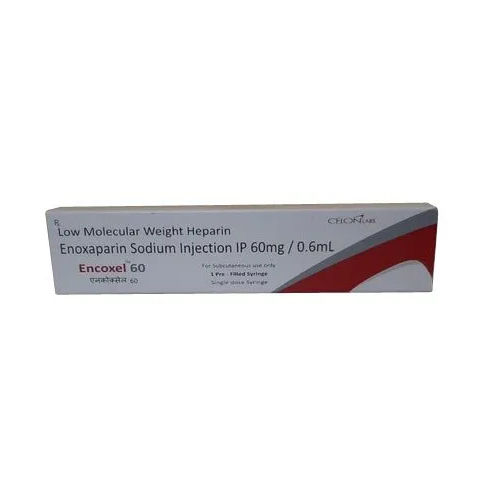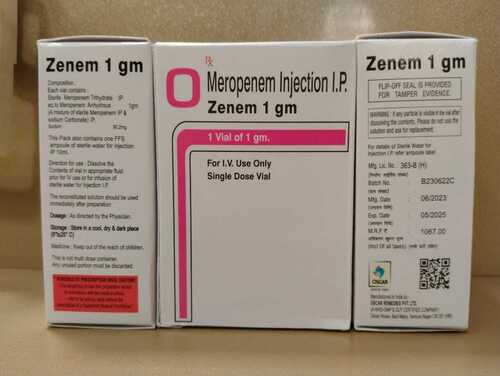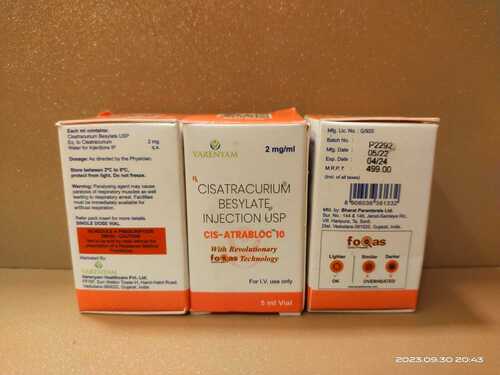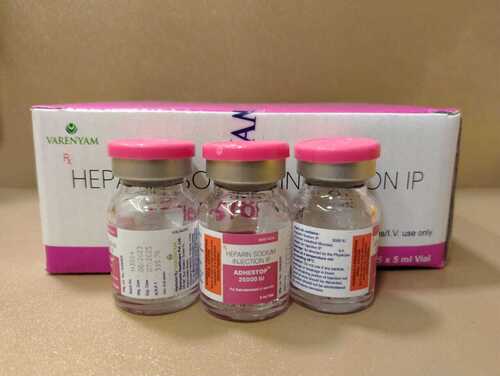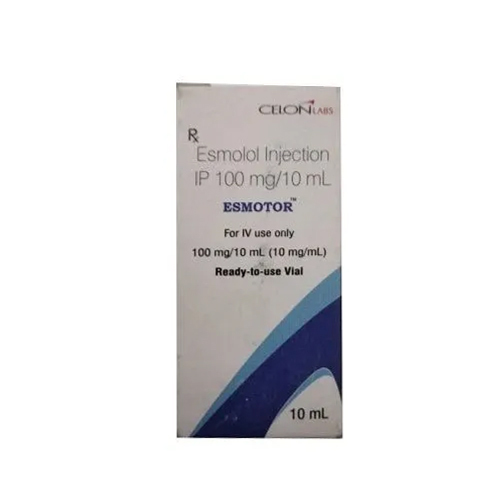Enoxaparin Sodium Injection
155 INR/Box
Product Details:
- Drug Type Injection
- Physical Form Liquid
- Dosage As per instruction
- Dosage Guidelines As per required
- Storage Instructions Dry Place
- Click to View more
X
Enoxaparin Sodium Injection Price And Quantity
- 100 Box
- 155 INR/Box
Enoxaparin Sodium Injection Product Specifications
- As per required
- As per instruction
- Dry Place
- Injection
- Liquid
Enoxaparin Sodium Injection Trade Information
- Cash Advance (CA)
- 5000 Box Per Month
- 7-10 Days
- All India
Product Description
Enoxaparin Sodium Injection is a drug used to prevent and treat deep vein thrombosis (DVT) and pulmonary embolism (PE). It is a low molecular weight heparin (LMWH) used to reduce the risk of blood clots in patients who are bedridden or have recently undergone surgery, such as hip or knee replacement surgery. It is also used to reduce the risk of stroke and heart attack in patients with certain heart conditions. Enoxaparin Sodium Injection is supplied as a sterile, preservative-free solution in a pre-filled syringe or vial. It is available in two different concentrations: 40 mg/0.4 mL and 60 mg/0.6 mL. The dosage of Enoxaparin Sodium Injection is determined by the patients body weight and medical condition. It is typically injected subcutaneously (under the skin) once or twice daily. Enoxaparin Sodium Injection is a safe and effective treatment for preventing and treating deep vein thrombosis (DVT) and pulmonary embolism (PE). It is easy to administer and can be used in both inpatient and outpatient settings. It has few side effects and is well tolerated by most patients.
FAQ :
Q: What is Enoxaparin Sodium Injection used for?
A: Enoxaparin Sodium Injection is used to prevent and treat deep vein thrombosis (DVT) and pulmonary embolism (PE). It is also used to reduce the risk of stroke and heart attack in patients with certain heart conditions.
Q: What is the form of Enoxaparin Sodium Injection?
A: Enoxaparin Sodium Injection is supplied as a sterile, preservative-free solution in a pre-filled syringe or vial. It is available in two different concentrations: 40 mg/0.4 mL and 60 mg/0.6 mL.
Q: How is Enoxaparin Sodium Injection administered?
A: Enoxaparin Sodium Injection is typically injected subcutaneously (under the skin) once or twice daily. The dosage of Enoxaparin Sodium Injection is determined by the patients body weight and medical condition.
Q: What are the side effects of Enoxaparin Sodium Injection?
A: The most common side effects of Enoxaparin Sodium Injection include pain, redness, or swelling at the injection site; nausea; and headache. Serious side effects are rare but can include bleeding, allergic reactions, and low blood platelet counts.
A: Enoxaparin Sodium Injection is used to prevent and treat deep vein thrombosis (DVT) and pulmonary embolism (PE). It is also used to reduce the risk of stroke and heart attack in patients with certain heart conditions.
Q: What is the form of Enoxaparin Sodium Injection?
A: Enoxaparin Sodium Injection is supplied as a sterile, preservative-free solution in a pre-filled syringe or vial. It is available in two different concentrations: 40 mg/0.4 mL and 60 mg/0.6 mL.
Q: How is Enoxaparin Sodium Injection administered?
A: Enoxaparin Sodium Injection is typically injected subcutaneously (under the skin) once or twice daily. The dosage of Enoxaparin Sodium Injection is determined by the patients body weight and medical condition.
Q: What are the side effects of Enoxaparin Sodium Injection?
A: The most common side effects of Enoxaparin Sodium Injection include pain, redness, or swelling at the injection site; nausea; and headache. Serious side effects are rare but can include bleeding, allergic reactions, and low blood platelet counts.
Enter Buying Requirement Details
Other Products in 'Pharmaceutical Injection' category
 |
SHOM HEALTH CARE
All Rights Reserved.(Terms of Use) Developed and Managed by Infocom Network Private Limited. |

 Send SMS
Send SMS